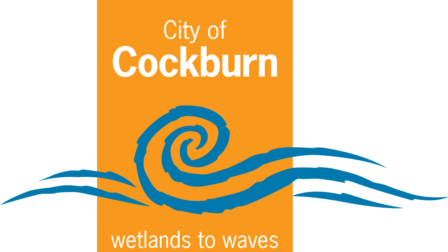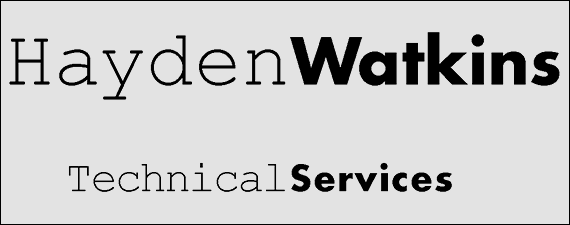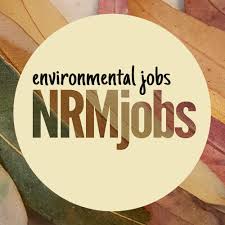Conference
Program
The overarching theme of our conference followed the Ramsar theme for 2022 of ‘Wetlands Action for People & Nature’. The 2-day conference was divided into 4 half-days, each of which is set to feature the following themes - Leadership, Reconciliation, Sustainability and Partnerships.
RECONCILIATION
Day 1 | Afternoon
Wednesday, 2nd February 2022
SUSTAINABILITY
Day 2 | Morning
Thursday, 3rd February 2022
PARTNERSHIPS
Day 2 | Afternoon
Thursday, 3rd February 2022
THE LEADERSHIP SESSION
Day 1 | Morning | Wednesday, 2nd February 2022
To increase the knowledge, awareness, understanding, participation, engagement, and commitment to the conservation of wetlands.
Opening
Keynote
A Jewel in the Crown of Global Biodiversity
South-western Australia is a global biodiversity hotspot, where the greatest plant species diversity is found on the most severely nutrient-impoverished soils. Three National Parks and Greater Perth harbour the greatest plant species diversity in south-western Australia. Within Greater Perth, the Greater Brixton Street Wetlands are notorious for their enormous plant species richness, and home to numerous plant species that have special conservation value as well as several threatened ecological communities. If we do not mitigate climate change and continue to develop Perth based on out-of-date principles that ignore the sensitive hydrology of our region, many threatened species and ecological communities will be pushed towards extinction. We have a choice, and can prevent at least some of this, but we have to act, and act now. To underpin our actions, we need to understand why some of the species in this regions are rare and why they grow there. I will showcase a study of a Declared Rare Flora species and explain why it is rare and why it only grows there. This provides a clear example of the vulnerability of the Greater Brixton Street Wetlands and what is required to proserve this unique system.
Expert Presentation 1
Habitat Rehabilitation and Saltmarsh Mosquito Management in Adenia Saltmarsh TEC
Systematic biomonitoring and rehabilitation case studies at Adenia Saltmarsh have been conducted by SERCUL with stakeholders including Curtin University and North Metro TAFE students through different grants since 2016. These projects involved learning about saltmarsh ecology, rehabilitation techniques and ecological approaches for saltmarsh mosquito management and to educate the local community about the importance of saltmarshes as blue carbon sinks.
The project site is a temperate saltmarsh located in the Canning River Regional Park, with estuarine saltmarsh habitats recognised nationally as a Threatened Ecological Community (TEC) since 2013 and ranked as vulnerable. The saltmarsh vegetation complex is also listed as a priority III ecological community in Western Australia.
The research established baseline ecological data for the Adenia Saltmarsh TEC. The case studies provided opportunities for NRM officers, community volunteers, and University, TAFE and school students to participate in monitoring, rehabilitation activities and learn about saltmarsh ecology, restoration and conservation.
Expert Presentation 2
No Roe’d through the Wetlands - Long term community leadership leading to a succesful conservation outcome.
2021 saw a major milestone in the ongoing battle to protect and conserve the wetlands of the Swan Coastal Plain with the passing of the Beeliar Bill in WA’s State Parliament. This saw the Roe 8 Road Reserve removed from the Metropolitan Region Scheme. A result that was over 30 years in the making.
It is time to dispel the idea that saving and protecting our precious natural areas is primarily achieved by lying in front of bulldozers.
While non violent direct action (the tech term for lying in front of bulldozers) can have a place in the process, it is the thousands of hours of work that takes place prior to any action that will make or break a campaign. The campaign that stopped the construction of Roe 8 is a case in point.
There were several decades of submission making and “discussions” with Main Roads WA during which they would tell us how wonderful the road would be and we would say “But you are not building it”. Riveting stuff. Oh and the community stalls… Hundreds of community stalls.
We wrangled a review of the entire freight network through the Southern suburbs which led to the 6 point plan for improving Freight movements and then we went on to make a valiant attempt to divert Roe 7 south so Roe 8 would run along the rail freight reserve. At every turn the campaign focussed on alternatives and better outcomes for freight and communities.
Environmental campaigning is far more nuanced than we make it seem. As the campaign progressed we made use of the disciplines of neuromarketing, the psychology of the power of a good kind of peer group pressure and engagement of peoples values and beliefs. We did a makeover of the public perception of activists by demonstrating the wide range of professionals and regular citizens who were prepared to step up to the plate to protect the wetlands.
With no stone unturned several legal actions were also pursued and played a significant part in the campaign while political negotiations were ongoing with campaigners running for State Parliament to highlight the issue.
And when in an act of sheer spite the bulldozers came in, the community came out. Here also is where the immeasurable benefits of having the Cockburn Wetlands Centre became so obvious. There was a ready made population of people, especially young people who knew their wetlands were important and were strongly connected to them. Once you’ve dip netted by the old board walk you are wetlander for life.
Then overnight out from the dust kicked up from bulldozers came the first step to a victory with a change of Government and the announcement to stop the construction of Roe 8.
And then we did the unthinkable.
We sat down in a room with the Government and Main Roads and worked together to restore what had been damaged. But that’s another story…
Expert Presentation 3
Deep Spectacle, Surface Collapse: Imagining Design and Conservation in the Proposed Yule Brook Regional Park
Beneath Noongar Boodjar are deep waters, surfacing as tapestries of wetlands and streams throughout the Perth landscape. These deep waters form aquifers with intricate fluctuations and flows, sustaining much of the phenomenal biodiversity on the surface of Perth. As a 'Hotspot City', these ecological values and the waters that sustain them are in conflict with human impacts. In particular, urban and industrial development.
It is vital that ecological frameworks become embedded within planning frameworks, to prioritise the health and safety of the land of which we are all a part. Collaborative environmental planning and landscape strategies are critical, providing canvases and conversations in a just transition from a biodiversity conflict to a place of care. ‘Deep’ and ‘surface’ mappings of urban hydrology and biodiversity allow us to ‘see’ our biodiversity, and imagine alternate frameworks for development. In these maps, we find opportunities for design and urgent spaces for conservation.
From here, we arrive at the claypans of Perth, along Mandoorn (Yule Brook) on the eastern margin of the coastal plain. The Yule Brook corridor is a hotspot within a hotspot, comprising more than 700 hectares of land connecting the Dyarlgarro (Canning River) with Jerban (Lesmurdie Falls) in Perth’s hills. Here are some of the highest rates of biodiversity in the world within at least forty ecotypes. Yule Brook is an important corridor for the future of Perth, and negotiations to create a Regional Park are ongoing. Unless appropriate buffers and landscape opportunities are realised, collapse is likely. This discussion considers Yule Brook as a space for agency in which to bring together design, restoration and conservation.
Case Study 1
Reimagining Perth's Lost Wetlands
This presentation provides an overview and links to a series of four videos that visually track the changes in our wetlands since European settlement, and relate these to the attitudes and knowledge of the time. This resource, created by Tracy de Vetter as part of her NatureLink Perth Internship, was launched at the 2021 WA Wetlands Management Conference and was made possible, in part, by the generosity and knowledge of attendees. We now wish to share this resource with everyone in the hope that this engaging narrative might be used to illustrate the shifting baseline of wetland extent and quality, providing impetus for improved future management of our remaining wetlands.








